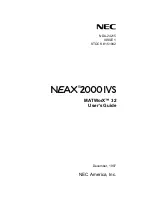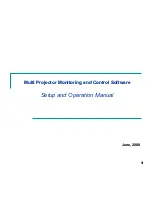
Using MySQL within an Amazon EC2 Instance
1329
You can learn more about configuring MySQL with Windows Server Failover Clustering
from the whitepaper posted here:
http://www.mysql.com/why-mysql/white-papers/
mysql_wp_windows_failover_clustering.php
For background and usage information about Windows Server Failover Clustering, see these pages on
the Microsoft Technet site:
•
Failover Clustering
•
Failover Clusters in Windows Server 2008 R2
15.4. Using MySQL within an Amazon EC2 Instance
The Amazon Elastic Compute Cloud (EC2) service provides virtual servers that you can build and
deploy to run a variety of different applications and services, including MySQL. The EC2 service is
based around the Xen framework, supporting x86, Linux based, platforms with individual instances of
a virtual machine referred to as an Amazon Machine Image (AMI). You have complete (root) access
to the AMI instance that you create, enabling you to configure and install your AMI in any way you
choose.
To use EC2, you create an AMI based on the configuration and applications that you intend to use,
and upload the AMI to the Amazon Simple Storage Service (S3). From the S3 resource, you can
deploy one or more copies of the AMI to run as an instance within the EC2 environment. The EC2
environment provides management and control of the instance and contextual information about the
instance while it is running.
Because you can create and control the AMI, the configuration, and the applications, you can deploy
and create any environment you choose. This includes a basic MySQL server in addition to more
extensive replication, HA and scalability scenarios that enable you to take advantage of the EC2
environment, and the ability to deploy additional instances as the demand for your MySQL services and
applications grow.
To aid the deployment and distribution of work, three different Amazon EC2 instances are available,
small (identified as
m1.small
), large (
m1.large
) and extra large (
m1.xlarge
). The different types
provide different levels of computing power measured in EC2 computer units (ECU). A summary of the
different instance configurations is shown in the following table.
EC2 Attribute
Small
Large
Extra Large
Platform
32-bit
64-bit
64-bit
CPU cores
1
2
4
ECUs
1
4
8
RAM
1.7GB
7.5GB
15GB
Storage
150GB
840GB
1680GB
I/O Performance
Medium
High
High
The typical model for deploying and using MySQL within the EC2 environment is to create a basic
AMI that you can use to hold your database data and application. Once the basic environment for
your database and application has been created you can then choose to deploy the AMI to a suitable
instance. Here the flexibility of having an AMI that can be re-deployed from the small to the large or
extra large EC2 instance makes it easy to upgrade the hardware environment without rebuilding your
application or database stack.
To get started with MySQL on EC2, including information on how to set up and install MySQL within
an EC2 installation and how to port and migrate your data to the running instance, see
Section 15.4.1,
“Setting Up MySQL on an EC2 AMI”
.
Summary of Contents for 5.0
Page 1: ...MySQL 5 0 Reference Manual ...
Page 18: ...xviii ...
Page 60: ...40 ...
Page 396: ...376 ...
Page 578: ...558 ...
Page 636: ...616 ...
Page 844: ...824 ...
Page 1234: ...1214 ...
Page 1427: ...MySQL Proxy Scripting 1407 ...
Page 1734: ...1714 ...
Page 1752: ...1732 ...
Page 1783: ...Configuring Connector ODBC 1763 ...
Page 1793: ...Connector ODBC Examples 1773 ...
Page 1839: ...Connector Net Installation 1819 2 You must choose the type of installation to perform ...
Page 2850: ...2830 ...
Page 2854: ...2834 ...
Page 2928: ...2908 ...
Page 3000: ...2980 ...
Page 3122: ...3102 ...
Page 3126: ...3106 ...
Page 3174: ...3154 ...
Page 3232: ...3212 ...
















































